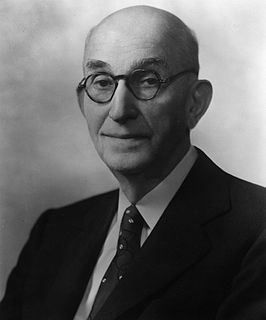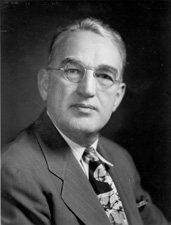
Alben William Barkley was an American lawyer and politician from Kentucky who served in both houses of Congress and as the 35th vice president of the United States from 1949 to 1953. In 1905, he was elected county attorney for McCracken County, Kentucky. He was chosen County Judge/Executive in 1909 and U.S. representative from Kentucky's First District in 1912. As a Representative, he was a liberal Democrat, supporting President Woodrow Wilson's New Freedom domestic agenda and foreign policy.
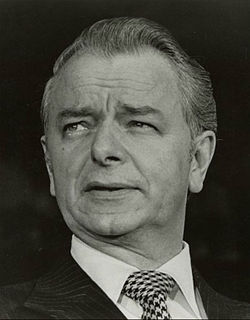
The 1978 United States Senate elections in the middle of Democratic President Jimmy Carter's term. Thirteen seats changed hands between parties. The Democrats at first lost a net of two seats to the Republicans, and then one more in a special election. Democrats nevertheless retained a 58-41 majority.

The 1964 United States Senate elections coincided with the election of President Lyndon B. Johnson by an overwhelming majority, to a full term. His Democratic Party picked up a net two seats from the Republicans. As of 2019, this is the last time either party has had a two-thirds majority in the Senate, which would have hypothetically allowed the Senate Democrats to override a veto, convict and expel certain officials, or invoke cloture without any votes from Republicans. The Senate election coincided with Democratic gains in the House in the same year.
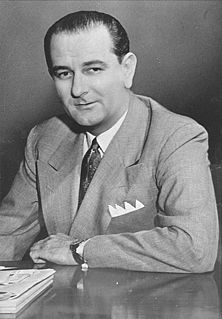
The 1956 United States Senate elections were elections for the United States Senate that coincided with the re-election of President Dwight D. Eisenhower. Although the Democrats gained two seats in regular elections, the Republicans gained back two seats in special elections, leaving the party balance of the chamber remained unchanged.

The 1950 United States Senate elections occurred in the middle of Harry S. Truman's second term as President. As with most 20th-century second-term mid-terms, the party out of the Presidency made significant gains. The Republican opposition made a net gain of five seats, taking advantage of the Democratic administration's declining popularity during the Cold War and the aftermath of the Recession of 1949. The Democrats held a narrow 49 to 47 seat majority after the election. This became the first time since 1932 that the Senate Majority Leader lost his seat and the only instance where the majority leader lost his seat while his party retained the majority.

The 1946 United States Senate elections were held November 5, 1946, in the middle of Democratic President Harry S. Truman's first term.

The United States Senate elections of 1944 coincided with the re-election of Franklin D. Roosevelt to his fourth term as President. The Democrats' large majority remained the same, but they lost one seat to the Republicans in a special election.

The United States Senate elections of 1940 coincided with the election of Franklin D. Roosevelt to his third term as President.

The United States Senate elections of 1936 coincided with the reelection of President Franklin D. Roosevelt. The Great Depression continued and voters backed progressive candidates favoring Roosevelt's New Deal in races across the country. The Democrats gained 5 net seats during the election, and in combination with Democratic and Farmer–Labor interim appointments and the defection of George W. Norris from the Republican Party to become independent, the Republicans were reduced to 16 seats, the most lopsided Senate since Reconstruction.

The United States Senate elections of 1934 occurred in the middle of Democratic President Franklin D. Roosevelt's first term. In the middle of the Great Depression, voters strongly backed Roosevelt's New Deal and his allies in the Senate. The Democrats picked up a net of nine seats, giving them a supermajority. President Harry S. Truman was first elected to the U.S. Senate in the 1934 election. Truman would serve over a decade in the U.S. Senate, before becoming President Roosevelt's third Vice President, before succeeding to the presidency upon the death of President Roosevelt.
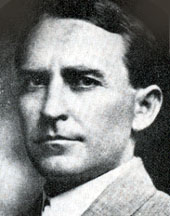
The 1938 United States House of Representatives elections was an election for the United States House of Representatives in 1938 which occurred in the middle of President Franklin D. Roosevelt's second term. Roosevelt's Democratic Party lost a net of 72 seats to the Republican Party, who also picked up seats from minor Progressive and Farmer-Labor Parties.

The 1958 New York state election was held on November 4, 1958, to elect the Governor, the Lieutenant Governor, the State Comptroller, the Attorney General, a judge of the New York Court of Appeals and a U.S. Senator, as well as all members of the New York State Assembly and the New York State Senate.

The 1966 New York state election was held on November 8, 1966, to elect the Governor, the Lieutenant Governor, the State Comptroller, the Attorney General and the Chief Judge of the New York Court of Appeals, as well as all members of the New York State Assembly and the New York State Senate. Besides, 15 delegates-at-large to the New York State Constitutional Convention of 1967 were elected on the state ticket, and three delegates each in the 57 senatorial districts.
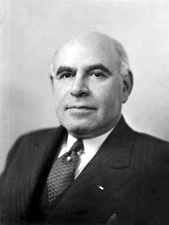
The 1938 New York state election was held on November 8, 1938, to elect the Governor, the Lieutenant Governor, the State Comptroller, the Attorney General, two U.S. Senators and two U.S Representatives-at-large, as well as all members of the New York State Assembly and the New York State Senate.

The 1934 New York state election was held on November 6, 1934, to elect the Governor, the Lieutenant Governor, the State Comptroller, the Attorney General, a U.S. Senator, two U.S. Representatives-at-large, the Chief Judge and two associate judges of the New York Court of Appeals, as well as all members of the New York State Assembly and the New York State Senate.

The 1932 New York state election was held on November 8, 1932, to elect the Governor, the Lieutenant Governor, the State Comptroller, the Attorney General, the Chief Judge, a U.S. Senator and two U.S. Representatives-at-large, as well as all members of the New York State Assembly and the New York State Senate.

The 1937 New York state election was held on November 2, 1937, to elect a judge of the New York Court of Appeals, as well as all members of the New York State Assembly. Besides, delegates for the New York State Constitutional Convention, to be held in 1938, were elected, and an amendment to the State Constitution which proposed the increase of the term in office of the members of the New York State Assembly to two years, and of the statewide elected state officers to four years, was accepted.

The 1939 New York state election was held on November 7, 1939, to elect the Chief Judge of the New York Court of Appeals. Besides, an amendment to the State Constitution proposed to legalize Parimutuel betting on horse-race tracks, and was accepted.

The 1940 New York state election was held on November 5, 1940, to elect three judges of the New York Court of Appeals, a U.S. Senator and two U.S Representatives-at-large, as well as all members of the New York State Assembly and the New York State Senate.

The 1944 New York state election was held on November 7, 1944, to elect a judge of the New York Court of Appeals and a U.S. senator, as well as all members of the New York State Assembly and the New York State Senate.











